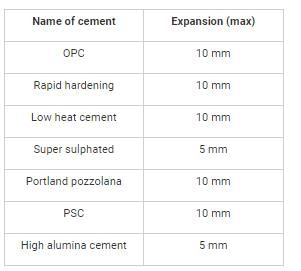Test: Concrete Technology- 1 - SSC JE MCQ
20 Questions MCQ Test - Test: Concrete Technology- 1
The slump of concrete used for hand placed pavement construction is recommended by the Indian Standard as:
Concrete in the member represented by a core test shall be considered acceptable if the average equivalent cube strength of the cores is equal to at least q percent of the cube strength of the grade of concrete, where q (%) is:
Fly ash is added to concrete to improve all of the following properties EXCEPT:
The process of mixing some mortar in the mixer at the beginning of the first batch concrete mixing is called:
With the increased rate of loading during testing of concrete specimens, the compressive strength of concrete:
The flakiness of aggregate has the following effect on the strength of the concrete in which it is used:
The effect of adding calcium chloride in concrete is
(i) to increase shrinkage
(ii) to decrease shrinkage
(iii) to increase setting time
(iv) to decrease setting time
The correct answer is
For M 25 grade concrete, the split tensile strength in terms of percentage of its compressive strength is _________.
Which of the following properties of a plastic concrete is modified by the air entraining agents?
Which of the following is partially destructive test of concrete?
If creep coefficient for concrete at 7 days is k1 and at 28 days is k2 then
According to Le Chatelier Method for testing soundness of cement, high alumina cement should not have an expansion of more than:
The workability of rounded aggregates for a given water content is a good because:
Consider the following statement:
Shrinkage of concrete depends upon the:
1. Relative humidity of the atmosphere
2. Passage of time
Which of these statements is / are correct?






 decreases with time.
decreases with time.
















